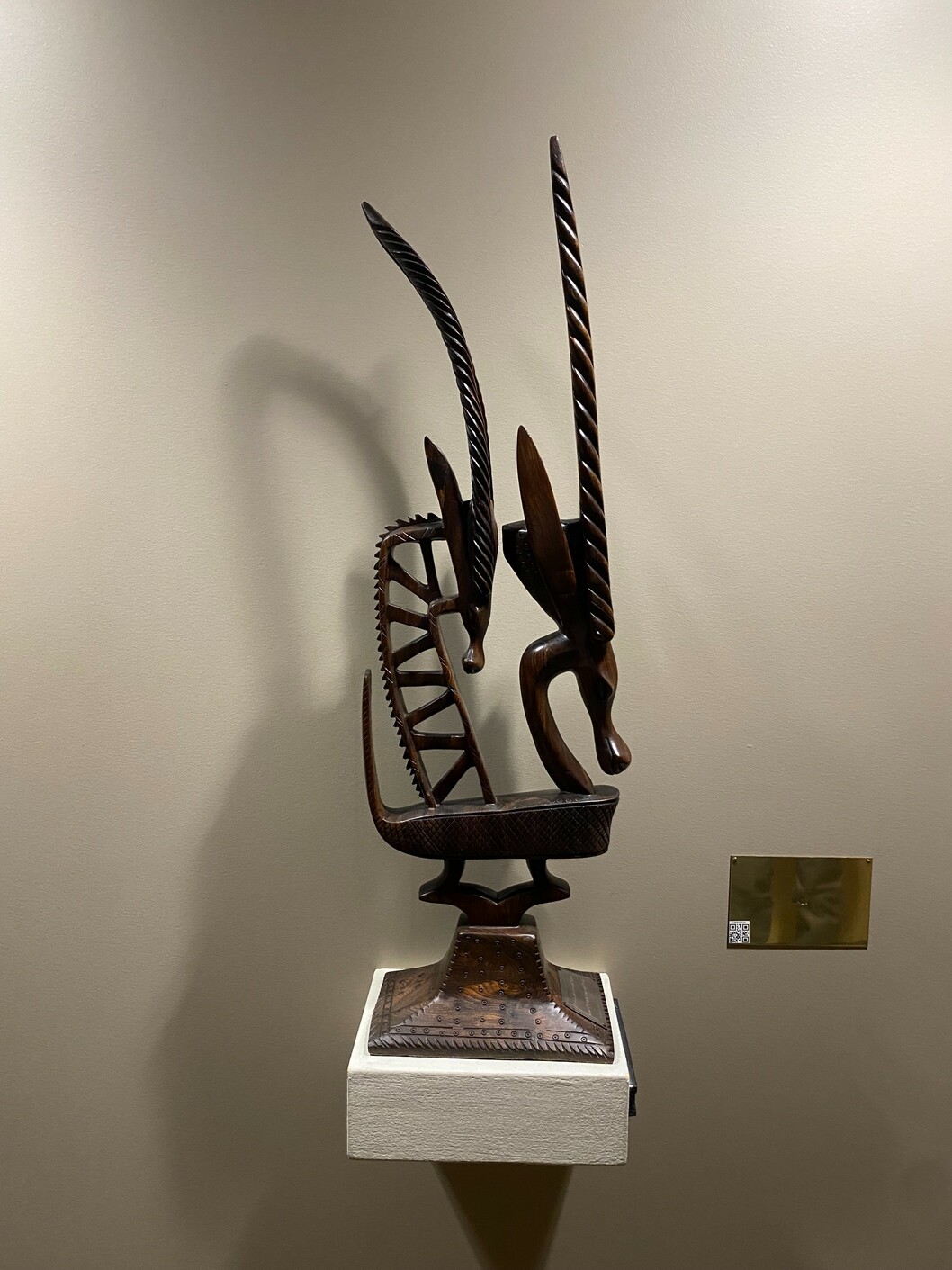
Bambara
Mali is known for their religious sculptures made of wood and metal. The Bambara, an ethnic group largely present in Mali, believe that ancestral spirits take forms of animals, vegetation, and others. The roles of these statues include communicating with the ancestral spirits, exhibiting beauty, and taking part in rituals. This sculpture is a carved, ebony headdress of two long horned antelope heads. The antelope imagery in Bambara art originates from a myth about a beast named Ci wara, who is half antelope and half human. Bambara is an agricultural society that has many farmers. According to myth, Ci wara introduced the idea of agriculture to the Bambara people.
These sculptures have a silhouette-like appearance with openwork designs that manipulate positive and negative space. Commonly, male antelopes have openwork zigzag patterns and curved horns whereas female antelopes have straight horns. Experts interpret the imagery of the infant on a female’s back as the embodiment of humanity and the relationship between the Sun (male) and the Earth (female).
The President of Mali, Moussa Traoré (1936 – 2020), presented this sculpture to the United Nations on 2 October 1981.

